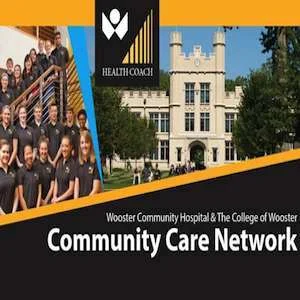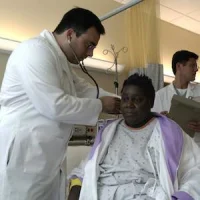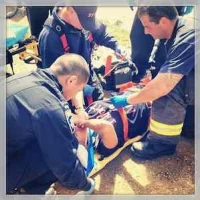Wooster Community Hospital in Ohio has recently started to enrol liberal arts college students as community health workers. In the first year, the programme had a 26 percent reduction of emergency department use and 51 percent reduction in hospital readmissions.
The Community Care Network programme trains and uses college students as community health workers. The programme is based on the concept that there are three sides to every hospital admission - what is observed in the inpatient setting, what the patient says and what really goes on in the patient's home.
Wooster's Community Care Network is a partnership between the hospital and The College of Wooster and was launched in 2013. "I was interested in doing some things with transition of care and really looking at readmissions and patients bouncing back to either readmission or to the ED," says former Wooster CNO Loraine Frank-Lightfoot, RN, DNP. "We already had a good readmission rate, but this was something that could reach even more people and make more of a difference."
AlexSandra Davis, RN, BSN and manager of the Community Care Network reached out to the college to collaborate on a programme that would train Wooster students as health coaches. David and Carol Sedgwick from the College of Wooster worked together to develop the Wooster's Community Health Network.
Students are provided an overview of the programme and information about the role and responsibilities of a health coach is also provided. Clinical aspects including pathophysiology of the various diseases that the students may encounter like diabetes, COPD, heart failure, and hypertension is also covered.
Students in the programme are assigned two patients who they visit once a week. Every student receives 0.5 credit hours which is allocated to their college service volunteer requirement.
Since the programme began in 2013, it has seen much success. There are currently 35 students and 80 patients enrolled and it is expected that by January 2016, over 100 patients will become part of it. With the increase in enrolment, there has been a decline in hospital use with a 26 percent reduction in ED use and 51 percent reduction in hospital readmissions.
Loraine Frank-Lightfoot points out that the programme has value but those wishing to start something similar should keep a few factors in mind. First, it would be a good idea to get some funding since the Wooster programme is completely free for patients but has never received any grant money. Second, it is important to be savvy about staffing in order to keep costs in check. Finally, it is important to understand the community's needs and resources in order to develop a productive programme.
As pointed out by one of the physicians, "by sending out a coach we have new eyes and ears in the field, seeing our patients for us." A patient enrolled in the programme also have very positive things to say about it. "It's kind of lonely at times so its been really nice interacting."
Source: HealthLeaders Media
Image Credit: Wooster Hospital


![Tuberculosis Diagnostics: The Promise of [18F]FDT PET Imaging Tuberculosis Diagnostics: The Promise of [18F]FDT PET Imaging](https://res.cloudinary.com/healthmanagement-org/image/upload/c_thumb,f_auto,fl_lossy,h_184,q_90,w_500/v1721132076/cw/00127782_cw_image_wi_88cc5f34b1423cec414436d2748b40ce.webp)







